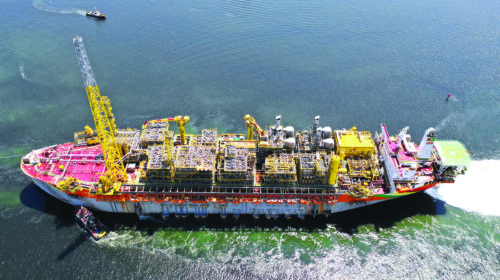
Emphasising that Guyana’s oil money will be safe and better able to earn interest in the hands of the United States Federal Reserve, both Finance Minister Winston Jordan and Central Bank Governor, Dr Gobind Ganga defended the move on Wednesday.
The two officials met on Wednesday at the Finance Ministry to sign a Memorandum of Understanding (MoU) that laid the groundwork for the operationalisation and management of the Natural Resource Fund (NRF).
When asked about the decision to bank the oil revenue at the Federal Reserve, Ganga noted that Guyana has long-held foreign assets at the Federal Reserve and it is in safe hands, when the other available options are considered.
Moreover, Jordan pointed out that Guyana stands to make an average of three per cent interest on its investment. The Minister noted that Guyana could not earn interest if the money was saved locally.
“There are different classes of assets. And these different classes of assets are invested in different markets, institutions and so on. The aim is to meet an average of 32 per cent long-term (interest),” he said.
“After investing in all these different assets, the aim over time is 3 per cent. So sometimes you may get 1.5 per cent, sometimes you might be lucky to get 4 and a half per cent. Sometimes we might get 3.2, 2.8 per cent. The safer the asset, the lower the interest”.
NRF Act
Part VI of the act speaks to the management of the fund and states that the Minister shall be responsible for the overall management of the fund and shall – (a) be responsible for preparing the Investment Mandate and include the items specified in section 36; (b) when preparing or amending the Investment Mandate, seek the advice of the Investment committee established under section 13; (c) be assisted by the Senior investment Adviser and Analyst; and (d) enter into an operational agreement with the Bank for the operational management of the Fund.
Section 12 (I) states that the Bank shall be responsible for the operational management of the Fund and shall manage the Fund in accordance with the Investment Mandate and the operational agreement. It further noted that the operational agreement shall state (a) the fee charged by the Bank for the operational management of the Fund;(b) the liability for paying damages to the Government for losses that occur due to negligence or intent on the part of the bank or private mangers in managing the Fund and (c) all other matters required for the effective operational management of the Fund.
The Federal Reserve
The Act also provides for the committee to include a media representative proposed by the Guyana Press Association (GPA). Other entities that will have to propose representatives include the Guyana Bar Association, the Guyana Extractive Industries Transparency Initiative (GY-EITI), Transparency Institute of Guyana Incorporated (TIGI), the Guyana Consumers’ Association and the various trade unions.
The Act specifically excludes persons such as Members of Parliament, Ministry staff, persons of unsound mind, ex-convicts and the bankrupt from serving on the Committee. It also lists the functions of the Committee, which will include monitoring and evaluating the compliance of Government and other officials related to the NRF, with the provisions of the Act.
The Stabroek Block, by far the most successful oil block in Guyana, is 6.6 million acres (26,800 square kilometres). Esso Exploration and Production Guyana Limited is the operator and holds a 45 per cent interest in the Stabroek Block. Hess Guyana Exploration Ltd holds a 30 per cent interest, and CNOOC Nexen Petroleum Guyana Limited holds a 25 per cent interest.
A contract was inked on October 7, 2016, between the coalition Government, ExxonMobil and its partners in the Stabroek Block. In the renegotiated contract, Guyana agreed to a two per cent royalty for every barrel of oil, a 50 per cent share of profit oil and a US$18 million signing bonus.
Guyana’s profit-sharing arrangement with ExxonMobil is for 50 per cent of profit oil. But with Exxon reclaiming its investment costs as cost oil, it means Guyana will initially get 12.5 per cent of profit.
Originally scheduled for 2020, first oil production has been moved up to this month. It is understood that the initial crude lifts will be one million barrels. With the first lift going to Exxon, Guyana is not expected to get its share until February to March.



